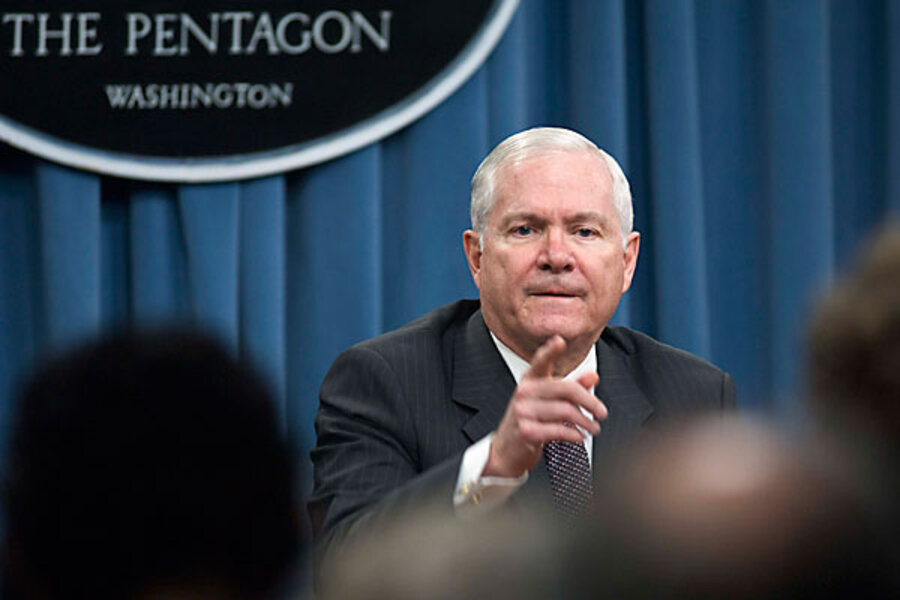QDR: Pentagon revises its long-held two-war doctrine
Loading...
| Washington
Defense Secretary Robert Gates's efforts to focus the Defense Department on the wars at hand – not the ones being waged in the minds of futurists fixated on China or Russia – is the guiding principle behind a new strategic document that sets the Pentagon’s priorities for the next several years.
Unlike last year, when Mr. Gates made cuts to programs that were at odds with Congress, this year’s changes are less dramatic and more thematic.
That includes the Quadrennial Defense Review, the strategic document released Monday. In the past, the QDR has demanded that the US be prepared to confront two major, conventional wars at one time. But noting that the US is already engaged in two wars, Gates said Monday that it’s time to rethink the “construct” of national security.
“We have learned through painful experience that the wars we fight are seldom the wars that we planned,” Gates told reporters at the Pentagon.
The challenges ahead
The new QDR outlines that the Pentagon must be prepared to fight a “much broader range of security challenges,” including high-tech ones in cyberspace, as well as the ones in which the US is currently engaged.
The language of the QDR document is vague and subject to interpretation. But this year’s QDR gives Gates, a former CIA chief who arrived at the Pentagon in late 2006, an opportunity to cement his vision on a building that resists fresh ideas from the outside.
The new QDR pushes the department to enhance intelligence, surveillance, and reconnaissance capabilities using remote control aircraft and other means. Past spending priorities focused almost exclusively on conventional weapons like rockets and fighter jets. But new technologies are seen as key to fighting wars in Iraq and Afghanistan and preventing them in places like Yemen, where Al Qaeda has a foothold.
The QDR also recognizes the strain on military forces and attempts to build on programs that help ease stresses on the force. That also means help foreign militaries help themselves, building “capacity” in a country such as Yemen.
“In a world where arguably the most likely and lethal threats will emanate from failed or fractured states, building the security capacity of partners has emerged as a key capability for this department,” Gates said.
Too ambitious?
The QDR encompasses an ambitious vision – one that could be too ambitious, according to Travis Sharp, an analyst with the Center for a New American Security, a think tank in Washington.
“Closing the distance between strategic priorities listed in the QDR and realistic budgetary plans to implement them will prove a major challenge in 2010 due to persistent structural constraints on reallocating defense spending,” wrote Mr. Sharp in an analysis of the QDR.
Such constraints include rising costs for military personnel – which now account for about 60 percent of the defense baseline budget, as well as escalating bills to pay for operations and maintenance and the wars overseas.
Congress might make change difficult, too, he said: “Some lawmakers may favor the status quo during 2010 thanks to the lingering economic recession and upcoming congressional midterm elections.”
-----
Follow us on Twitter.





